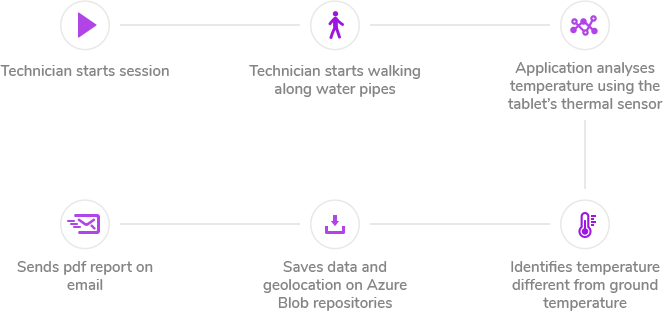Home » How » Industries » Technology » Thermal Vision ToughBook
Development of an AI-based solution for thermal detection of water leakage in the fields

The Client came to us with a request to build a solution that would use their tablet and thermal sensors in order to identify water leakage in the field.
The timeframe was very short – our rinf.tech team had less than 4 weeks to build and deliver the product to the Client. That short timeframe included:
By pointing the tablet at the ground, the application (using the thermal sensors) would detect leakage in areas with water pipes and send this data along with the geo coordinates to the cloud.
A technician walks along the water pipes with the tablet pointed to the ground to gather data that is automatically pushed to the cloud infrastructure and gets aggregated into a detailed report. Using thermal sensors, the app analyzes the ground temperature and records all temperature deviations to find a water leakage area.
The solution has the following features:

As the timeframe was short and requirements were fixed and clearly defined, Iterative Waterfall methodology with daily stand-ups was chosen.

